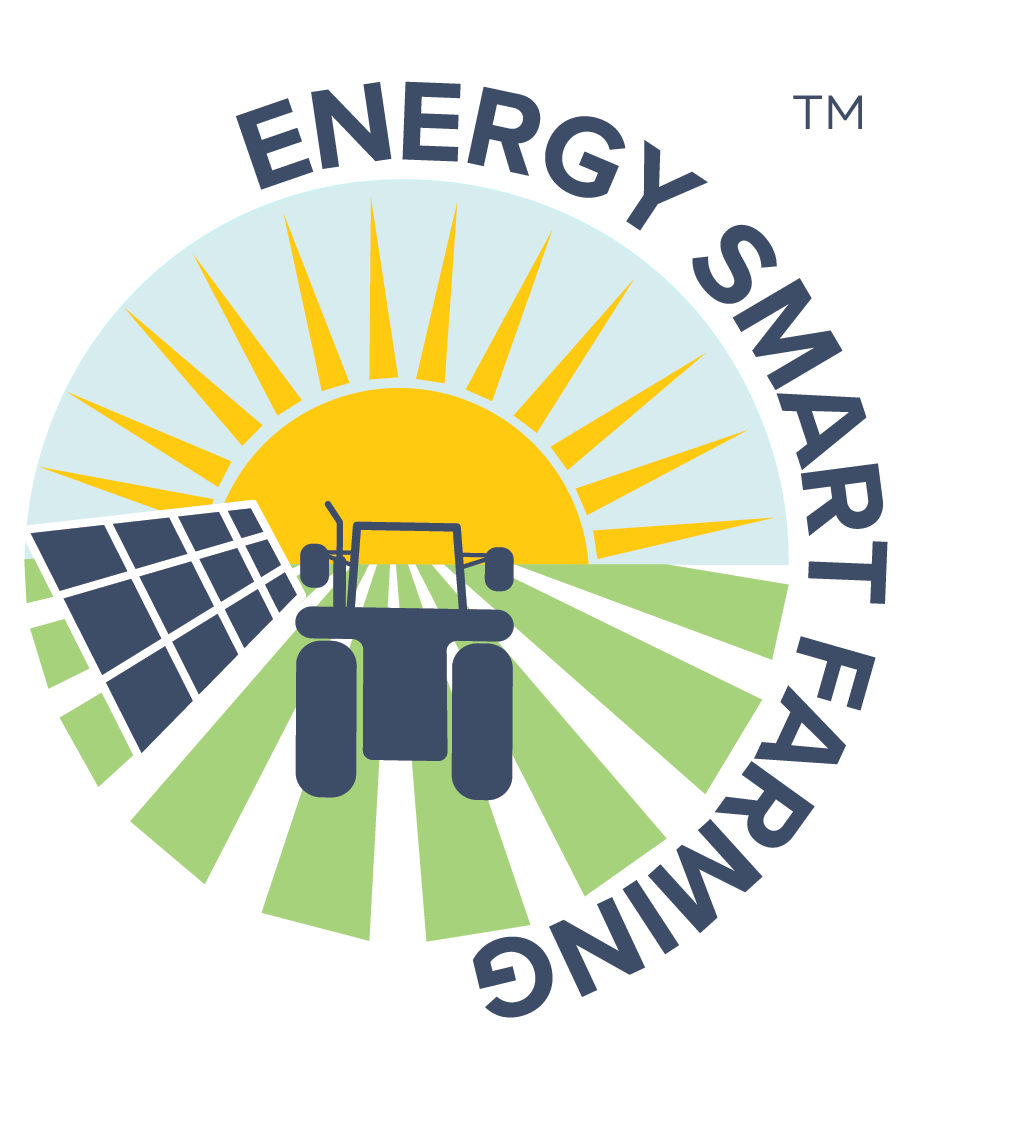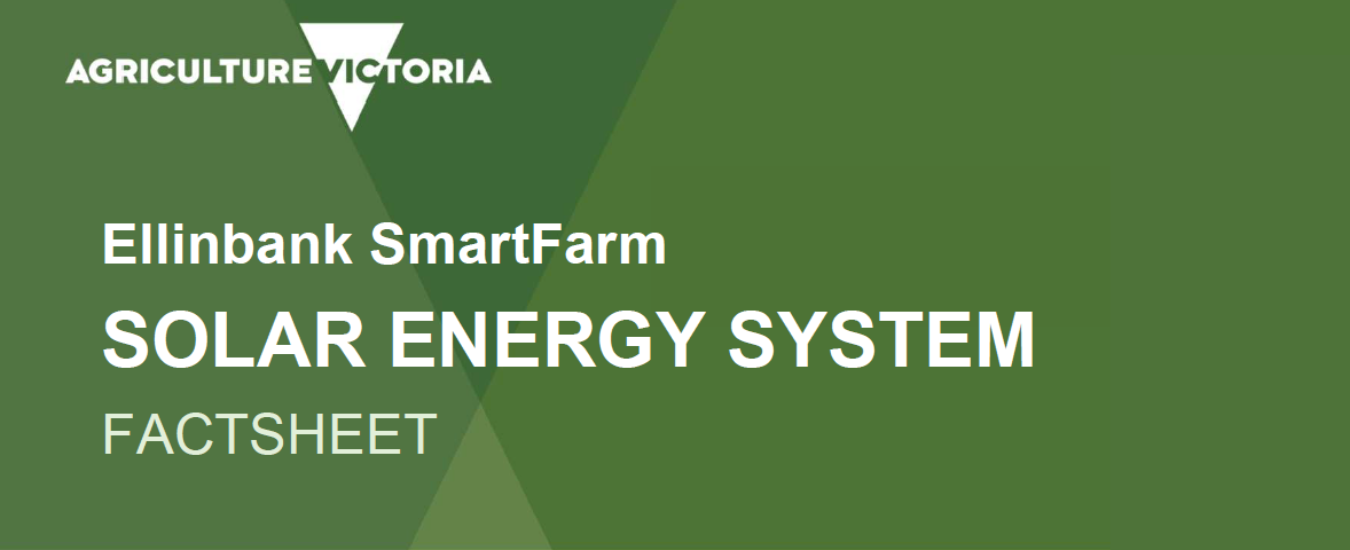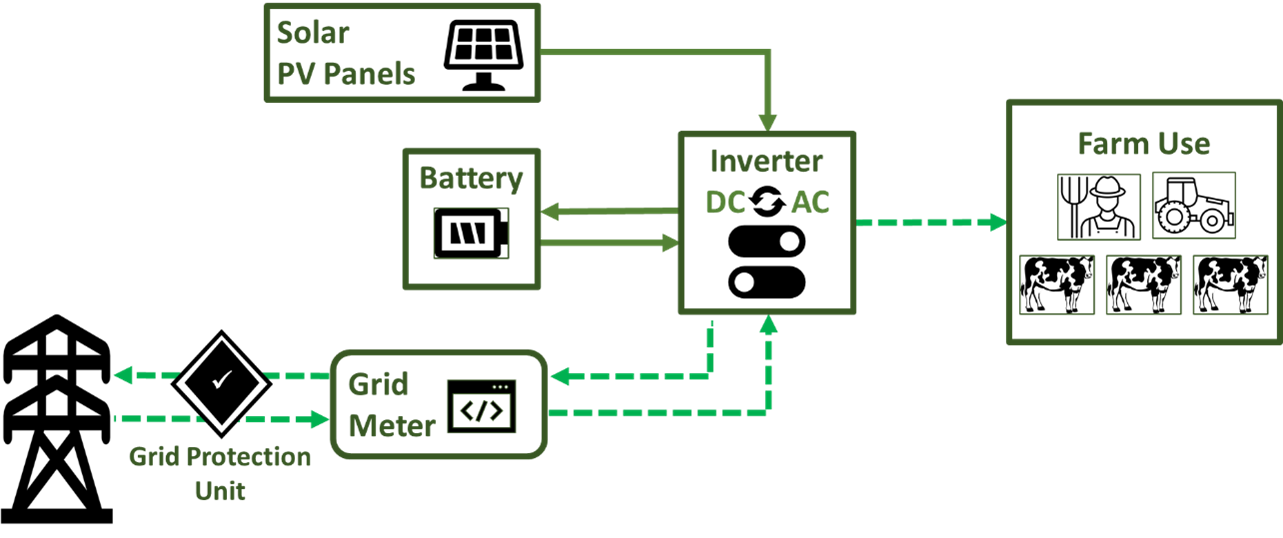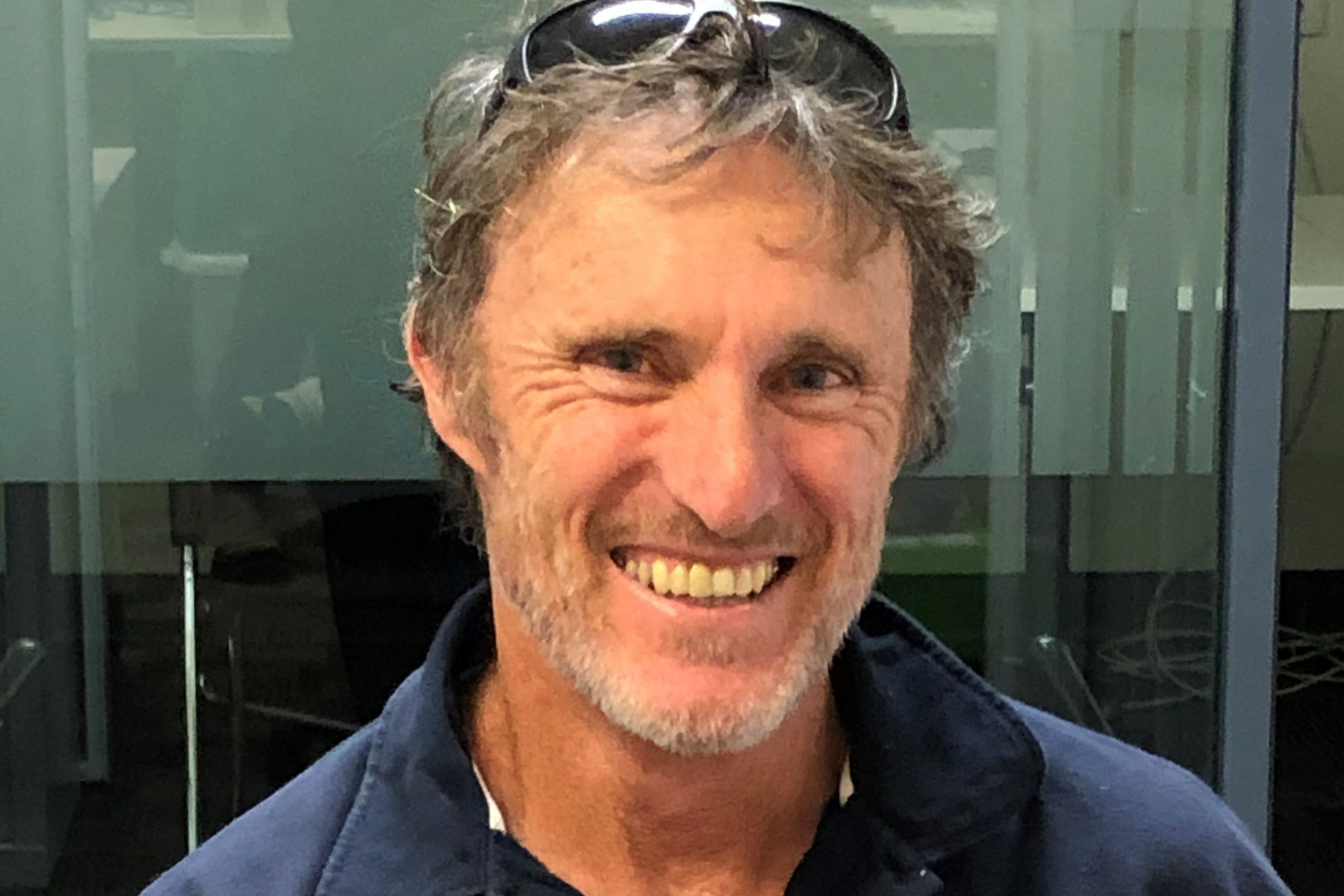Solar Energy System
A solar photovoltaic (PV) system, often referred to as solar panels or solar power, generates renewable electricity by converting energy from the sun.
A traditional solar energy system operates in one of two modes:
On-Grid Mode (grid-tied system)
- System is connected to the local electricity network
- Lower initial cost, less panels and no battery cost
- Excess energy can be sold back to the grid supplier
- Backup power source from the grid is available anytime from the electricity supplier when the PV system is operating sub-optimally (rain, cloud, night, or device issues)
Off-Grid Mode (island mode)
- Independent from electricity grid networks
- Excess energy is stored in battery
- More expensive to set up but can continue to be used when there is a grid blackout.
The Ellinbank SmartFarm PV system is a hybrid energy system. It is connected to the grid but has an additional battery bank to store energy. As the PV system is on-grid, a generator is still required for backup during blackouts.
Apart from the dairy shed, there are a range of indoor research feeding facilities using electricity. The solar panels are on the rooftop of one of these facilities.

Ellinbank Configuration
Key Components
- Photovoltaic (PV) panel: installed and arranged across the roof top to maximise energy production.
- Inverter: converts the variable direct current (DC) output from solar panels into 240V 50Hz alternating current (AC). This AC electricity is used for farm appliances.
- Grid-tied system: can draw electricity from the grid during night or when solar panels cannot generate enough electricity to meet required consumption. Excess electricity can be sold back to the grid.
- Battery system: allows for storage of electricity to use at times of low sunshine or to reduce reliance on the grid when at higher costs.
- Grid protection unit: offers protection to the solar inverter, as well as the grid, grid personnel and general public. Compulsory for the on-grid mode.
Learnings
Before Installation:
- Know what you want including location of the system. Consider options such as panel capacity to suit the farm demands.
- Obtain a structural certification to ensure roof or any other structure is suitable and safe to carry solar panels installed on the facility. This is normally arranged by the solar installer.
- Are you considering on-grid or off-grid mode, or a combination? Do you have a generator on site, and do you want to integrate it into the system?
- Know the type of solar panel and type of solar inverter you are getting.
- Ask about any limitations on your energy system.
- Research your preferred suppliers. Ask previous clients about them, ask for references. Get at least two quotes to compare with.
- Have a budget in mind. Note that items such as platforms, access ladders, metering and monitoring will cost extra.
- Find out about the expected life of the equipment, likely returns and payback. Consider potential maintenance and interest costs.
- Lock in a contract that lists all costs, timelines, warranty and defects liability period.
After Installation:
- Get an inspection and certification. Inspections are carried out by government nominated agencies in the form of a certified installer or an audit. Most systems may get inspected by the local energy company in due course.
- A final inspection, test and handover of the system should be carried out to ensure compliance and a high standard of work was achieved.
- Contact the Clean Energy Council (a non-for-profit organisation) to get information about buying solar energy, finding an installer, getting certification etc.
Ellinbank SmartFarm Solar Energy System
Further Information
The Ellinbank SmartFarm in Gippsland is Australia’s leading dairy innovation facility, fast-tracking innovative technology solutions in a research environment and showcasing them to the dairy industry. The Ellinbank SmartFarm has a target of becoming a carbon-neutral dairy farm and generating electricity through a range of alternative energy generation options including solar, wind and hydro energy to help achieve this goal.
More information, including a dashboard of the system’s performance is available on the Energy Smart Farming website www.extensionaus.com.au





